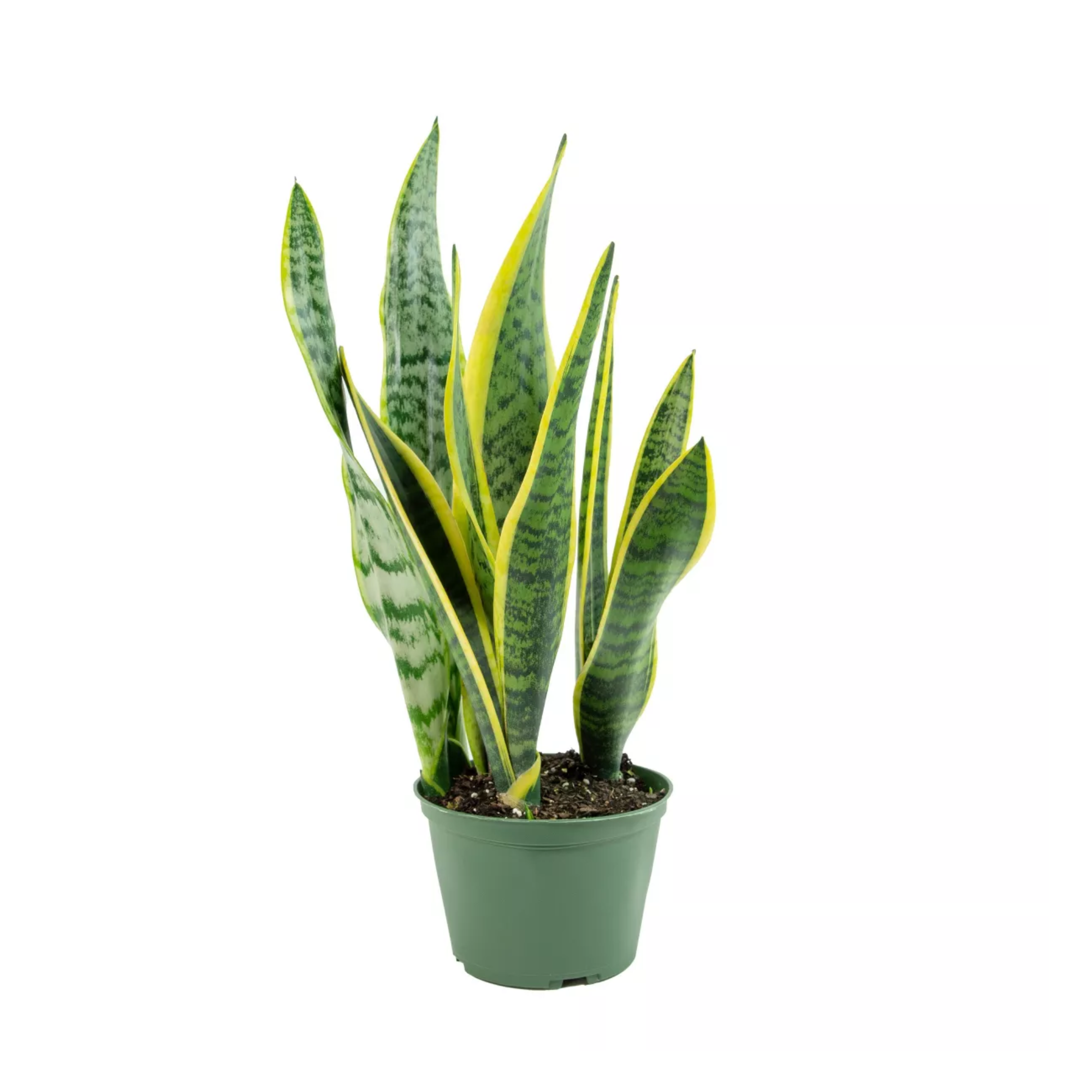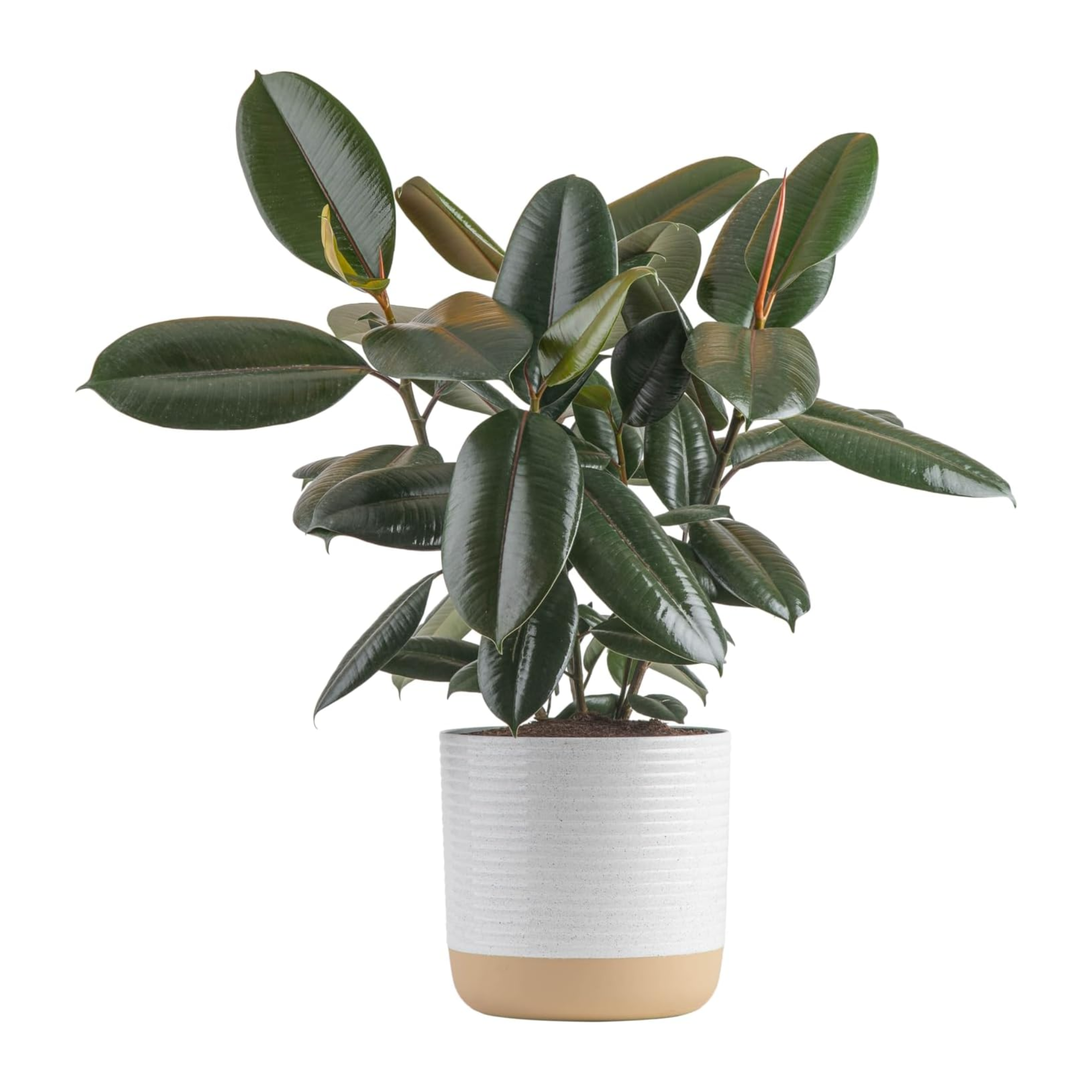These 6 Dust-Busting Houseplants Could Reduce the Need for Your Most Dreaded Chore
Houseplants have many benefits, and trapping dust is another accolade to add to the list


Dust isn't only the unsightly culprit responsible for your most dreaded chore, it’s also a real nuisance to our health. For anyone with allergies, its existence can be pretty debilitating, and yet it can’t be avoided. What we can do, however, is implement methods to curb its presence in our home and, besides never-ending dusting, houseplants could be the answer.
‘Houseplants are nature's air filters,’ explains Richa Kedia, plant expert and owner of Simplify Plants. ‘They trap dust through a process called phytoremediation, where dust particles settle on the leaves and are absorbed or processed. The larger and hairier the leaves, the more surface area to capture dust.’
But that's not all. 'On a larger scale, the addition of several houseplants can help naturally increase the humidity in the room,' adds Amy Enfield, Ph.D., a Senior Horticulturist at Scotts Miracle-Gro. 'Increased humidity means more water particles in the air. Just like near the surface of the leaf, the water particles combine with the dust particles and cause them to settle to the ground (or whatever surface they encounter first) rather than stay in the air.'
Here, we ask these experts to offer their insight into the best dust-busting houseplants, alongside some tips on how to style them. Never was there a better excuse to get busy decorating with plants!
1. Peace Lily
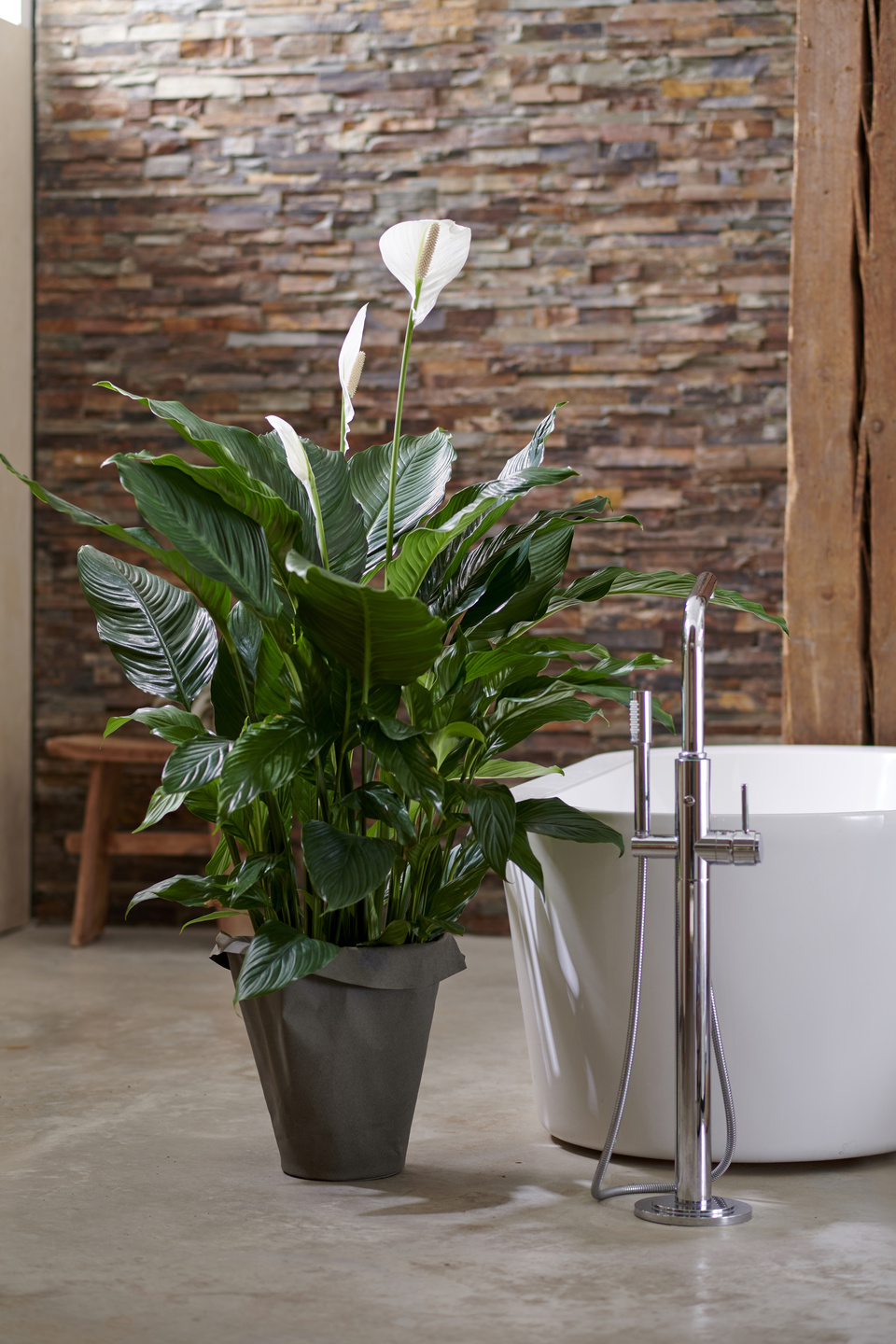
One of the best houseplants for boosting your health, the peace lily has a whole host of benefits, from purifying the air to improving humidity levels. It’s also one of the best houseplants you can buy if you want to help prevent dust from settling in your space.
‘With its broad leaves, the Peace Lily catches dust effortlessly,’ says Richa Kedia of Simplify Plants. ‘It's also a partial shade-lover, perfect for a stylish corner that needs a touch of green.’
'The leaves of the peace lily are not only good at trapping dust particles, but this plant is also a great air purifier to add to any home,' adds Amy Enfield, Ph.D., Senior Horticulturist at Scotts Miracle-Gro. 'The peace lily is a good air scrubber that removes airborne pollutants like benzene and acetone. It also is good at removing mold spores from the air.'
The Livingetc newsletters are your inside source for what’s shaping interiors now - and what’s next. Discover trend forecasts, smart style ideas, and curated shopping inspiration that brings design to life. Subscribe today and stay ahead of the curve.
For the less green-thumbed among us, you’ll be pleased to hear this plant is also super low-maintenance, so it’s bound to thrive in your home even with a bit of neglect.
2. Spider Plant

Spider plants aren’t one of the furriest out there, so you’d be forgiven for wondering why they’re listed here, but this bushy herbaceous houseplant does have useful scoop-shaped leaves that are great for holding dust. As Richa explains: ‘Its fine, arching leaves trap small dust particles, and its cascading nature makes it ideal for hanging baskets, adding a lively touch to any room.’
Amy adds that the way you display your spider plant can also help reduce the amount of dust in your home. 'Spider plants are often displayed in hanging baskets allowing them to capture dust particles higher in the air,' she says. 'Bonus, they are also good at removing other air pollutants, like carbon monoxide.' Caring for spider plants is super easy, too, so they're a great option for new plant parents.
3. Rubber Plant

The large surface area of the rubber plant’s leaves is what makes it a great dust catcher. 'The large waxy surfaces of rubber plant leaves are great for trapping dust particles,' says Amy. 'Not only are rubber plants good at trapping dust particles, they are also good at absorbing other airborne pollutants found in homes.'
‘This plant makes an especially bold statement in a minimalist or modern decor setting,’ adds Richa. Just remember to wipe the leaves regularly if you notice dust collecting to keep the plant looking its best and to help it photosynthesize (that goes for all the other plants listed here, too).
4. Snake Plant
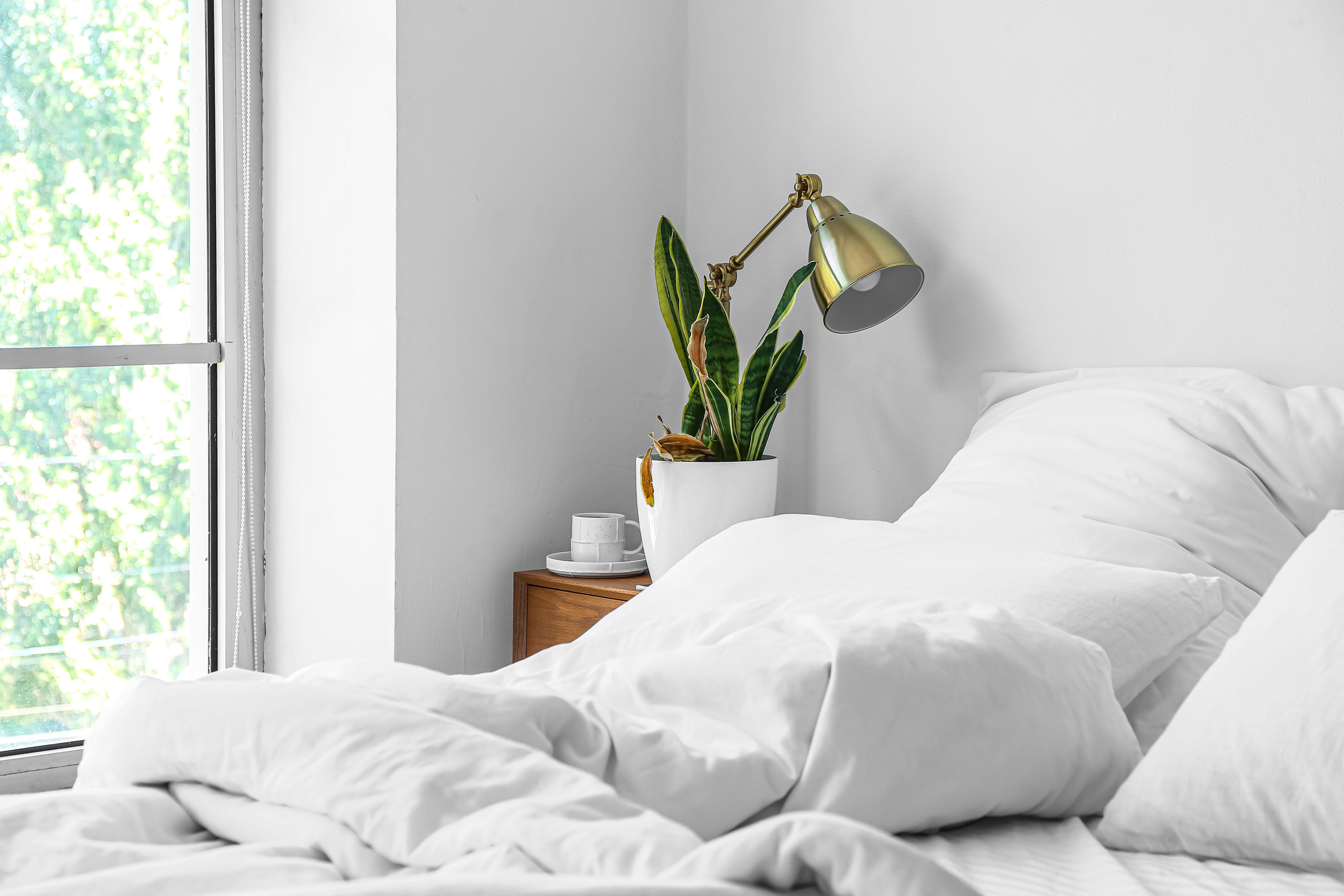
The snake plant is somewhat of a miracle houseplant. This popular plant, a member of the succulent family has upright, sword-like leaves which make for a striking silhouette and, according to Richa, they also work wonders at trapping dust. ‘As well as this, they fit seamlessly into tight spaces, perfect for a sleek, contemporary look,’ she adds.
5. Pothos
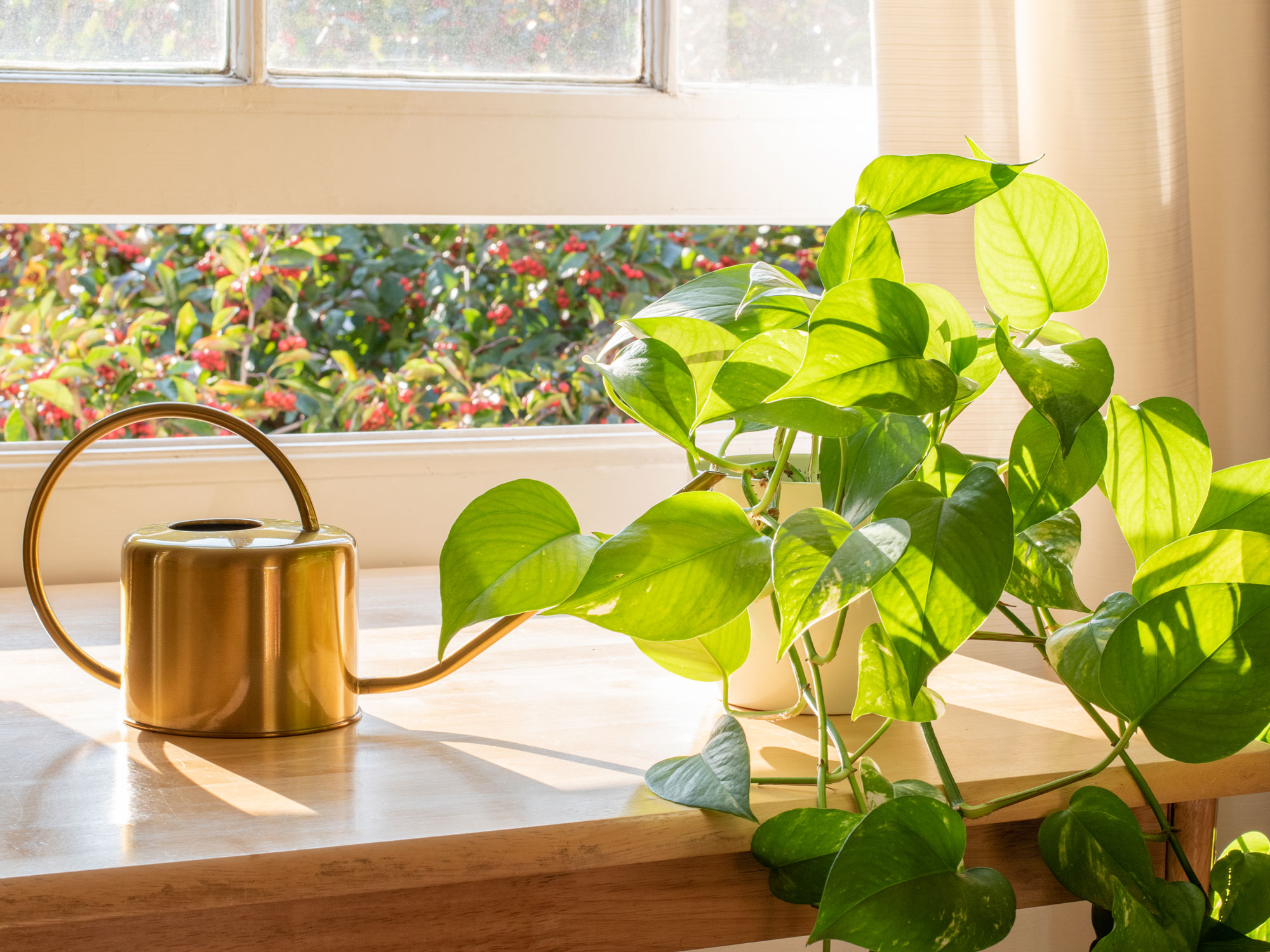
'Another plant with broad, waxy leaves that trap airborne dust particles is the pothos,' notes Amy. This popular plant, also known as Devil's Ivy, is one of the best trailing houseplants so, like the spider plant, it can be hung high up or placed on the top of chelves to catch more dust particles before they reach lower surfaces. 'Pothos is also good at removing other airborne pollutants, like benzene,' Amy adds.
6. Areca Palm

Lastly, the areca palm isn’t just a brilliant tall indoor plant for brightening up a lackluster corner, but it can also do wonders for your air quality if dust is causing you trouble. Considered one of the best air-purifying plants, these tropical-looking palms have erect, symmetrical leaves that float above the plant. ‘The feathery fronds catch dust as well as lend a tropical vibe,’ explains Richa. ‘Use it as a focal point in a room to create an instant vacation feel.’
Should you clean your houseplants' leaves?
All that dust-trapping is a big win for your indoor air quality, but your plants will need a little extra TLC to keep them healthy and looking their best. Regular cleaning of any of your houseplants' leaves is always important, but especially so if they're the dust-busting kind.
'To keep your houseplants actively removing dust particles from the air, their leaves need to be periodically cleaned,' notes Amy. 'For smooth-leafed plants, that’s as easy as wiping them with a soft, damp cloth. For hairy (fuzzy) plants, spritzing them with water in a sink or shower, is a good way to remove the particulates.' In some cases, soaking your houseplants by completely submerging them in water is best as it can help drench the soil in the process, too.
Now you can throw your feather duster away and let your houseplants do the hard work for you! Just remember to reward them with a good clean every once in a while.

Lilith Hudson is a freelance writer and regular contributor to Livingetc. She holds an MA in Magazine Journalism from City, University of London, and has written for various titles including Homes & Gardens, House Beautiful, Advnture, the Saturday Times Magazine, Evening Standard, DJ Mag, Metro, and The Simple Things Magazine.
Prior to going freelance, Lilith was the News and Trends Editor at Livingetc. It was a role that helped her develop a keen eye for spotting all the latest micro-trends, interior hacks, and viral decor must-haves you need in your home. With a constant ear to the ground on the design scene, she's ahead of the curve when it comes to the latest color that's sweeping interiors or the hot new style to decorate our homes.
